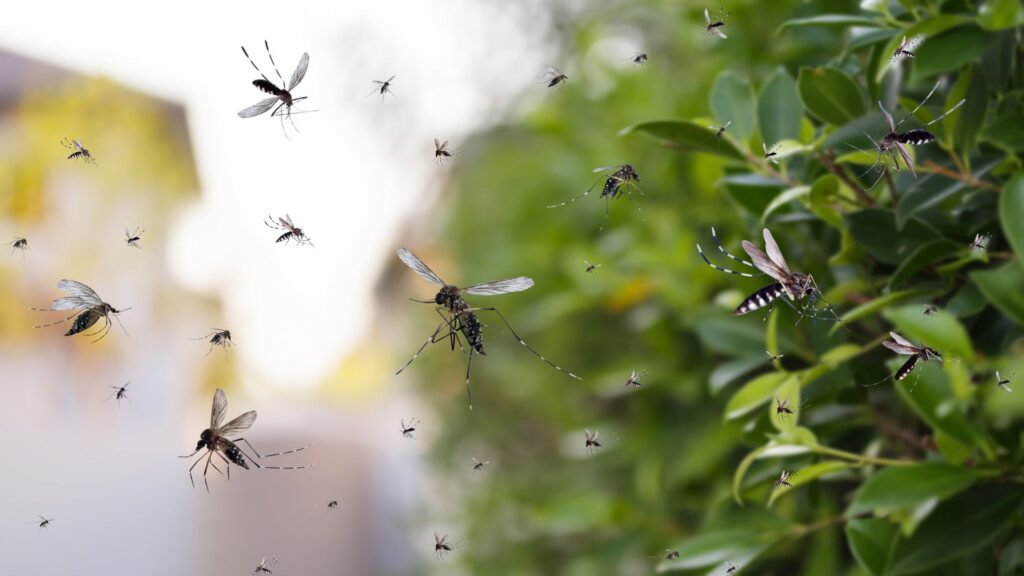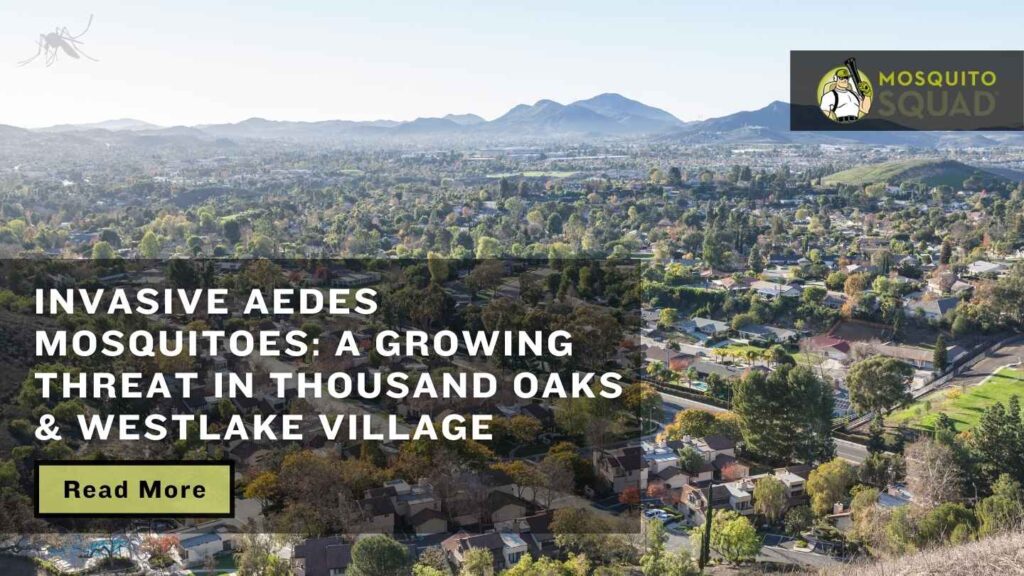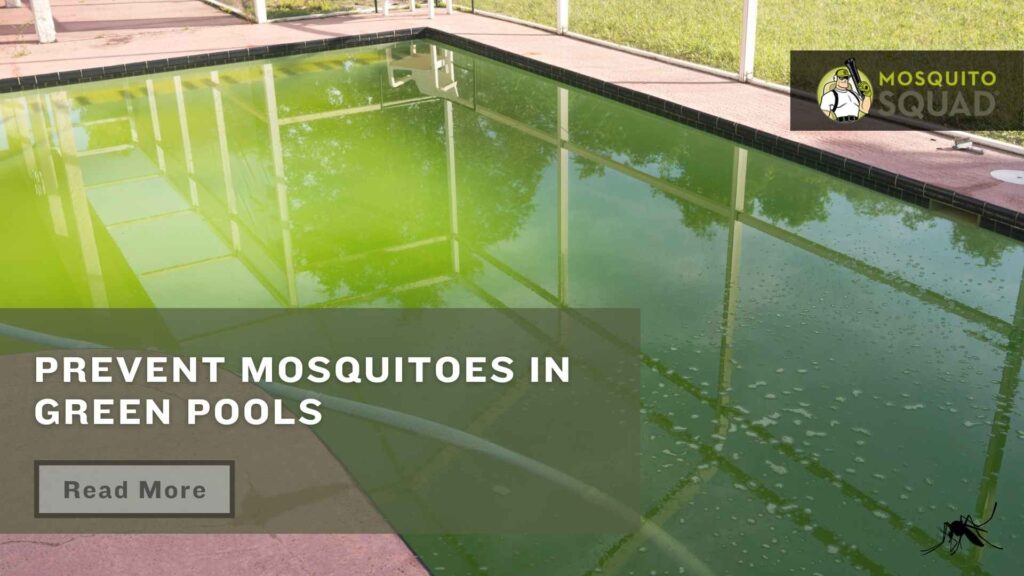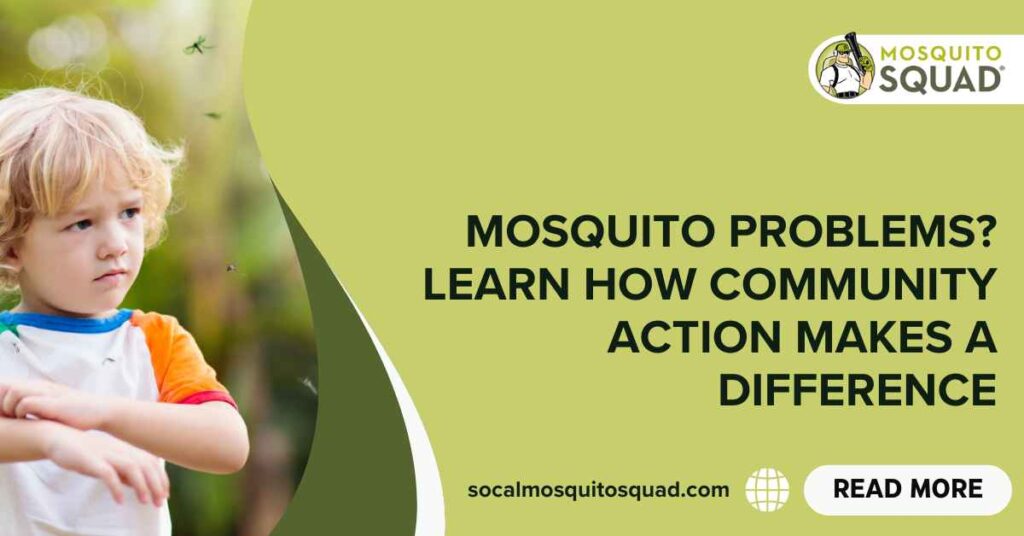Thousand Oaks Battle Against Aedes Mosquitoes: The Growing Threat Of Mosquito-Borne Diseases
Learn About Thousand Oaks Battle Against Aedes Mosquitoes: The Growing Threat Of Mosquito-Borne Diseases
This growing threat in Westlake Village and Thousand Oaks has made Pest control for mosquitoes a top concern of many TO Residents.
Imagine your idyllic backyard oasis in Thousand Oaks or Westlake Village – the lush greenery, the sparkling pool, and maybe even a tranquil water feature.
Now, picture this: those elements that create your slice of paradise could be the perfect breeding ground for a new invader.
We’re not talking about pesky weeds, but the Aedes mosquito – a stealthy daytime biter that can carry some seriously nasty diseases.
Could your luxury landscaping be unknowingly attracting a hidden threat? And with residents jet-setting around the globe, could these mosquitoes be hitchhiking their way into our communities?
From Backyard Buzz to Public Health Crisis

Most Californians are accustomed to the itchy annoyance of mosquito bites.
But beyond the summertime nuisance, a new threat is emerging in affluent neighborhoods like Thousand Oaks and Westlake Village—the invasive Aedes mosquito.
These aggressive biters carry the potential to transmit a range of serious diseases, transforming the familiar summertime pest into a public health concern.
The Aedes mosquito, a non-native and invasive species, is believed to have arrived in Los Angeles (and California in general) through these primary means:
- Cargo Ships: This is the most likely culprit. Eggs or larvae of the Aedes mosquito can survive in small amounts of stagnant water found in shipping containers from areas where they are prevalent.
- Used Tires: Internationally traded used tires often contain pools of stagnant water, perfect breeding grounds for Aedes mosquitoes.
- Plant Trade: The transport of certain plants, like “lucky bamboo,” sometimes shipped in water, can inadvertently bring mosquito eggs or larvae along.
Why are the mosquitoes becoming a big problem?

Aedes mosquitos are particularly concerning because:
- Aggressive daytime biters: Unlike many native mosquitos, they bite daily, making them harder to avoid.
- Disease vectors: They can transmit dangerous diseases like dengue fever, Zika virus, chikungunya, and yellow fever.
- Hard to eradicate: Their eggs can survive in dry conditions for a long, making them difficult to eradicate once established.
Aedes mosquitoes are a genus of mosquitoes originally found in tropical and subtropical zones, but thanks to globalization, they are now found on every continent except the Antarctic.
They are known for their black and white markings and are sometimes called “tiger mosquitoes.”
These unpleasant (their name comes from a Greek word meaning “unpleasant” or “odious”) insects are particularly bothersome because, unlike many other mosquitos, they are aggressive daytime biters.
The origin story of Aedes mosquitos traces back to sub-Saharan Africa. They are thought to have begun as generalist feeders, breeding in forested areas and feeding on various animals, including humans.
However, some populations in West Africa eventually adapted to human environments and became specialists at feeding on people. This adaptation likely stemmed from their reliance on artificial water storage containers for breeding, especially during dry seasons.
Today, Aedes mosquitos are a nuisance and a health concern. They are known vectors for several serious diseases, including dengue fever, Zika virus, chikungunya, and yellow fever.
Aedes mosquitos are notorious for transmitting several dangerous diseases, including:
- Dengue Fever is the most common illness spread by Aedes mosquitoes. It causes flu-like symptoms, but severe cases can develop into dengue hemorrhagic fever, which can be life-threatening.
- Zika Virus: While usually mild, Zika can cause severe congenital disabilities if a pregnant woman is infected. The most notable is microcephaly, where babies are born with abnormally small heads.
- Chikungunya: This disease causes fever and debilitating joint pain for months.
- Yellow Fever: A potentially fatal illness that causes fever, jaundice, and organ failure in severe cases.
Important Note: Not all Aedes mosquitoes necessarily carry these diseases.
The manicured landscapes and tranquil water features that define Thousand Oaks and Westlake Village’s luxury may inadvertently create ideal breeding grounds for Aedes mosquitos.
Lush landscaping, decorative fountains, and unattended pools allow these mosquitoes to thrive. Moreover, frequent international travel among residents could increase the chance of importing mosquito eggs or larvae from regions with diseases like Zika or dengue fever.
These affluent communities, accustomed to high living standards, may need to become more familiar with the proactive mosquito prevention measures needed to combat this growing threat.
What is an Aedes mosquito?

Describe the Aedes mosquito appearance (black and white stripes) and aggressive daytime biting.
The Aedes mosquito is a distinctive insect with a (hei bai – black and white) striped pattern that sets it apart from other local mosquito species.
These stripes run across their bodies and legs, often resembling a tiger’s markings, which has earned them the nickname “tiger mosquito.”
Unlike many other mosquito species that primarily feed at dawn or dusk, Aedes mosquitos are aggressive daytime biters.
This means they’re more likely to target people outdoors enjoying their yards, relaxing by the pool, or even having lunch on a patio – when residents might be less likely to be covered up or using repellent.
Thousand Oaks’ Lush Landscapes: A Feast for Aedes Mosquitoes

Thousand Oaks’ reputation for stunning landscapes can be a double-edged sword for Aedes mosquitos. Here’s why:
- Hiding in Plain Sight: Lush greenery provides the perfect daytime shade Aedes mosquitos crave to rest and avoid predators. Lawns, hedges, and overflowing plant containers become their shady havens.
- Water, Water Everywhere: Those beautiful water features – ponds, fountains, even birdbaths – become breeding pools for these mosquitoes. Aedes mosquitos only need a tiny amount of stagnant water to lay their eggs, and these features can provide a constant source.
- A Never-Ending Buffet: Thousand Oaks’ focus on vibrant landscaping often means various plants. Unfortunately, this variety can also provide a wider range of sources for Aedes mosquitos to feed on, making them more likely to thrive in these environments.
Standing Strong Together: Community Action Against Aedes Mosquitoes

While individual vigilance is crucial, effectively combating Aedes mosquitos requires a united front – a powerful combination of local mosquito control programs and active resident participation. Here’s why community action is essential:
- Strength in Numbers: Mosquitoes don’t respect property lines. A breeding ground in one yard can quickly become a problem for the entire neighborhood. Community-wide efforts ensure a more comprehensive approach to eliminating mosquito breeding sites. Local mosquito control programs can provide resources and expertise to residents, while residents’ participation in eliminating breeding grounds on their properties creates a more significant impact.
- Sharing the Burden, Sharing the Success: Mosquito control measures can be time-consuming. Community programs can lessen the individual burden by offering organized clean-up events, educational workshops on mosquito control techniques, and providing residents with free or subsidized mosquito dunks or larvicides for treating standing water. Sharing the workload makes the task more manageable and increases the likelihood of success.
- Knowledge is Power: Local mosquito control programs often have a wealth of information about mosquito biology, effective control methods, and potential risks specific to the area. By working together, residents can stay informed about potential outbreaks, receive updates on spraying schedules, and learn about new mosquito control strategies. This collaborative approach empowers residents to actively protect their community’s health.
Get a Free Quote for Your Protection
Luxurious landscaping and bugs in Thousand Oaks, California

The combination of luxurious landscaping, frequent international travel, and a potential lack of familiarity with aggressive mosquito species places Thousand Oaks & Westlake Village communities at a heightened risk for Aedes mosquito infestation.
These invasive mosquitoes carry the threat of serious diseases and can transform outdoor relaxation into a battle against painful and persistent bites.
Don’t let these stealthy invaders ruin your outdoor enjoyment. Mosquito Squad provides expert mosquito control services specifically tailored to combat Aedes mosquitoes.
Our trained technicians utilize various strategies to reduce mosquito populations, protect your property with effective barriers, and provide ongoing monitoring.
We help you reclaim your peace of mind and enjoy your beautiful surroundings. Contact Mosquito Squad today to learn how we can help you win the fight against mosquitos!
The first approach sustainably controls mosquito populations via eliminating their breeding ground, i.e., standing water sources, using environmentally safe larvicides, and spreading awareness in the community that mosquitoes are vectors of some extremely fatal diseases.
The first way to deal with mosquitoes is to eliminate where they lay their eggs, like standing water, without harming the environment.
We can use safe chemicals called larvicides to kill mosquito larvae. It’s also important to inform the community that mosquitoes can spread really bad diseases.
It is also crucial to spread awareness among the masses, healthcare personnel, and travelers, especially those visiting countries where mosquito-borne diseases are endemic.
Lastly, they recommended the use of personal protective measures to mitigate the threat of mosquito-borne diseases, e.g., insecticide-treated mosquito bed nets, mosquito repellent creams, sprays, sleeping in air-conditioned rooms, and wearing clothes that cover most body parts, especially legs, and arms.
To reduce the risk of mosquito-borne diseases, personal protective measures are crucial, including:
- Wearing long-sleeved Clothes and Long Pants: Cover most of your body parts, especially your arms and legs, to create a physical barrier against mosquitoes.
- Using Mosquito Repellents: Apply mosquito repellent creams or sprays to exposed skin, following the manufacturer’s instructions for maximum protection.
- Sleeping in Air-conditioned Rooms: Keep the room cool and maintain a temperature that discourages mosquito activity.
- Utilizing Mosquito Bed Nets: To provide additional protection and reduce the risk of bites, use insecticide-treated mosquito bed nets while sleeping.
Neglected swimming pools in Thousand Oaks
Neglected swimming pools in Thousand Oaks are a serious concern regarding Aedes mosquitoes. These pools provide an ideal insect breeding ground, transforming a backyard oasis into a public health hazard. Residents can take action to protect themselves and their communities:
- Maintain your pool: Ensure proper filtration and chlorination to keep the water clean and mosquito larvae-free.
- Drain and cover: If the pool is unused, drain it completely and cover it securely with a tight-fitting tarp.
- Report neglected pools: If you notice a green, unmaintained pool in your neighborhood, contact your local vector control agency.
- Stock with mosquitofish: If your pool must remain filled but inoperable, consider adding mosquitofish, which feeds on mosquito larvae.
In conclusion, personal protective measures were advised to mitigate the risk associated with mosquito-borne diseases.
Specifically, people were recommended to use insecticide-treated mosquito bed nets, mosquito repellent creams and sprays, sleep in air-conditioned rooms, and wear clothing covering most body parts, particularly the legs and arms.



